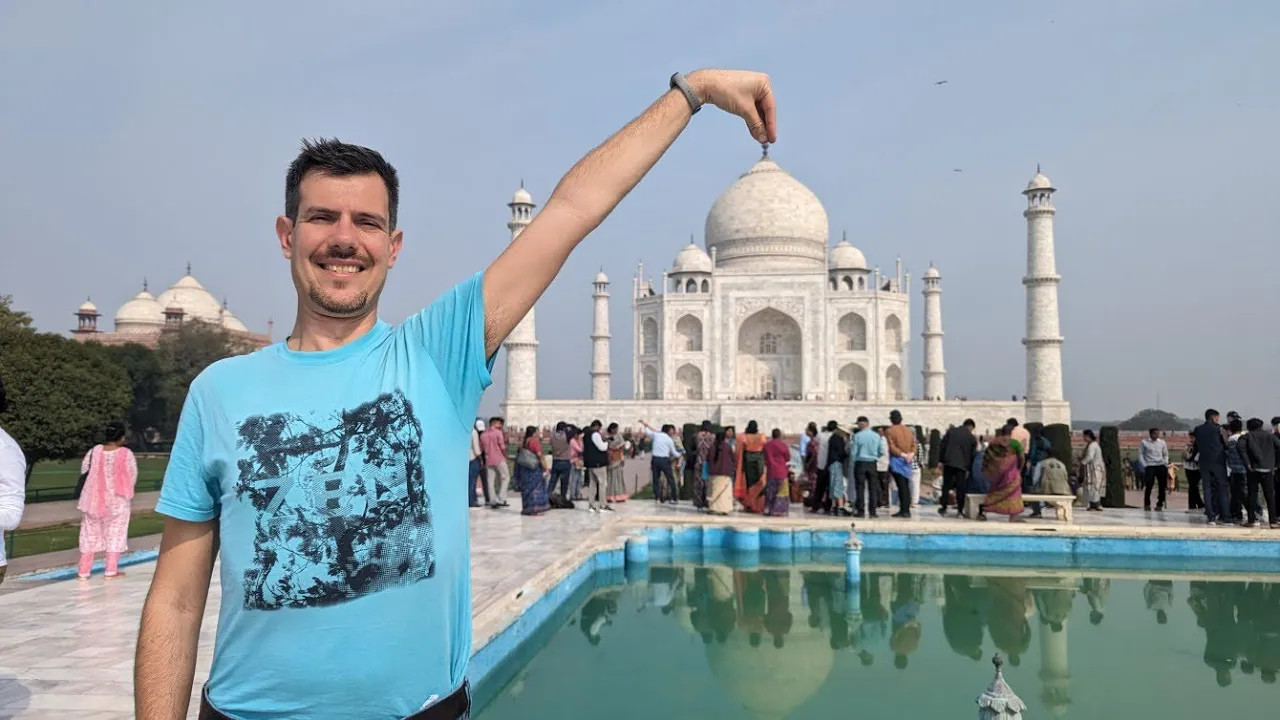Hello, everyone! It’s Luca here, and I am thrilled to share my awe-inspiring experience standing in front of one of the world’s most iconic landmarks — the Taj Mahal in India. This architectural marvel, built 450 years ago by a devoted king in memory of his beloved wife, continues to captivate hearts worldwide with its timeless beauty and profound symbolism.
As I stand here, surrounded by the grandeur of the Taj Mahal, I cannot help but marvel at the intricate craftsmanship and the sheer dedication that went into its creation. What truly fascinates me is the process behind this masterpiece — a testament to human ingenuity and innovation.
Constructed over a span of 22 years, employing more than 20,000 workers, the Taj Mahal stands as a testament to the power of collaboration and meticulous planning. Every aspect of its design, from the symmetrical layout to the intricate details, reflects a deep understanding of architectural principles and artistic vision.
One of the most remarkable features of the Taj Mahal is its perfect symmetry. Each side mirrors the other, creating a harmonious balance that is both mesmerizing and awe-inspiring. This symmetry was achieved through careful planning and the use of standardized building blocks, akin to a modern-day assembly line.
As I reflect on the construction of the Taj Mahal, I cannot help but draw parallels to the world of modern technology, particularly cloud-native applications. Just as the architects of the Taj Mahal utilized standardized building blocks to create a masterpiece, today’s software developers leverage cloud computing and other advanced tools to build innovative solutions.
In the realm of cloud-native applications, we stand on the shoulders of giants, leveraging existing tools and frameworks to accelerate development and drive innovation. Much like the craftsmen of the Taj Mahal, we strive for perfection, harnessing the power of technology to create solutions that transcend boundaries and inspire generations to come.
My visit to the Taj Mahal has been an enlightening experience, reminding me of the profound connection between the past and the future. As I stand here, surrounded by history and heritage, I am reminded of the importance of embracing our roots while embracing the opportunities that lie ahead.
Moreover, my journey to India for the New Delhi World Book Fair has been a truly enriching experience, allowing me to connect with people from diverse backgrounds, exchange stories, and savor the rich tapestry of Indian culture and cuisine.
In conclusion, the Taj Mahal serves as a timeless symbol of human creativity and resilience, inspiring us to strive for excellence in everything we do. As we continue to navigate the ever-evolving landscape of technology, let us draw inspiration from the past while embracing the possibilities of the future.
Thank you for joining me on this journey, and remember — let’s automate more and continue to push the boundaries of innovation. Until next time, stay curious, stay inspired, and keep exploring!
With gratitude, Luca Berton
Subscribe to the YouTube channel, Medium, and Website, X (formerly Twitter) to not miss the next episode of the Ansible Pilot.Academy
Learn the Ansible automation technology with some real-life examples in my
Udemy 300+ Lessons Video Course.

My book Ansible By Examples: 200+ Automation Examples For Linux and Windows System Administrator and DevOps

Donate
Want to keep this project going? Please donate
